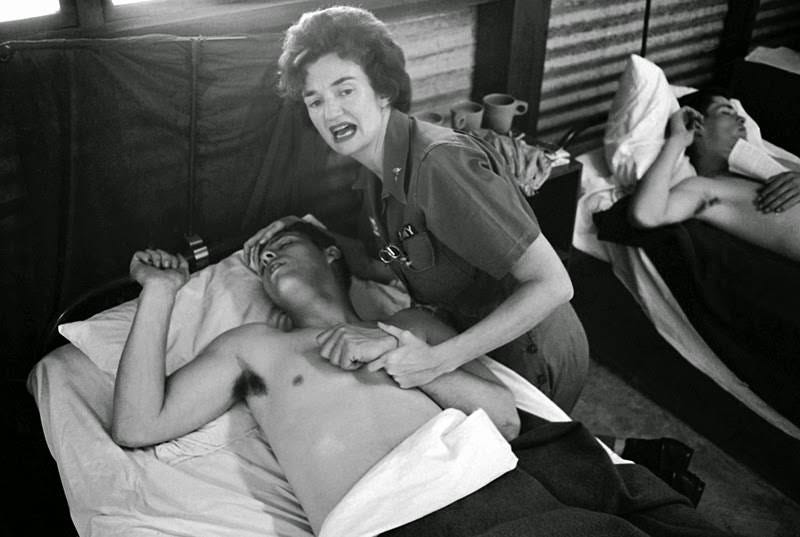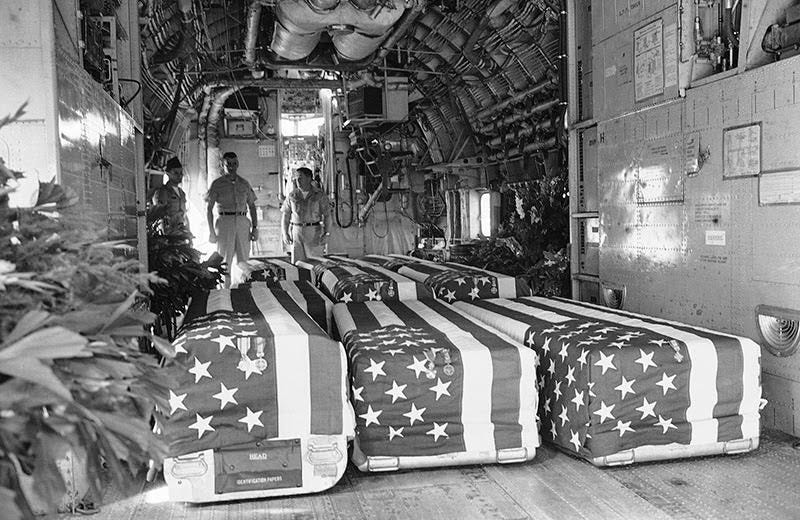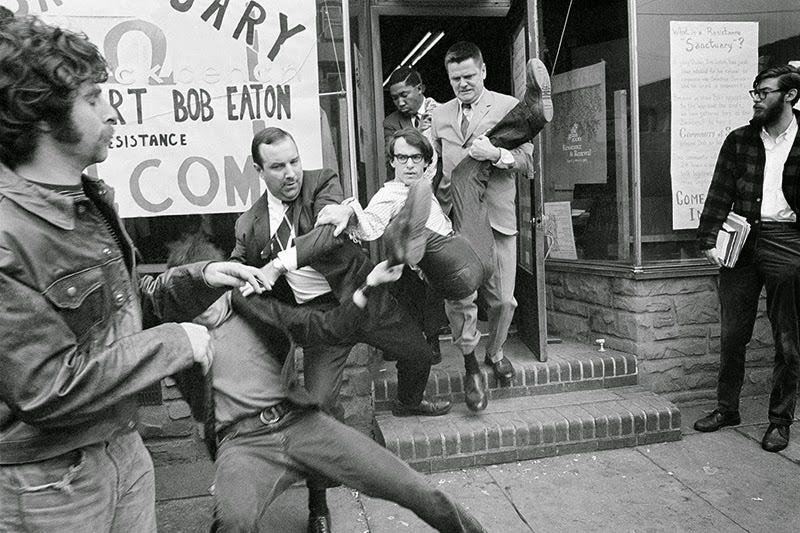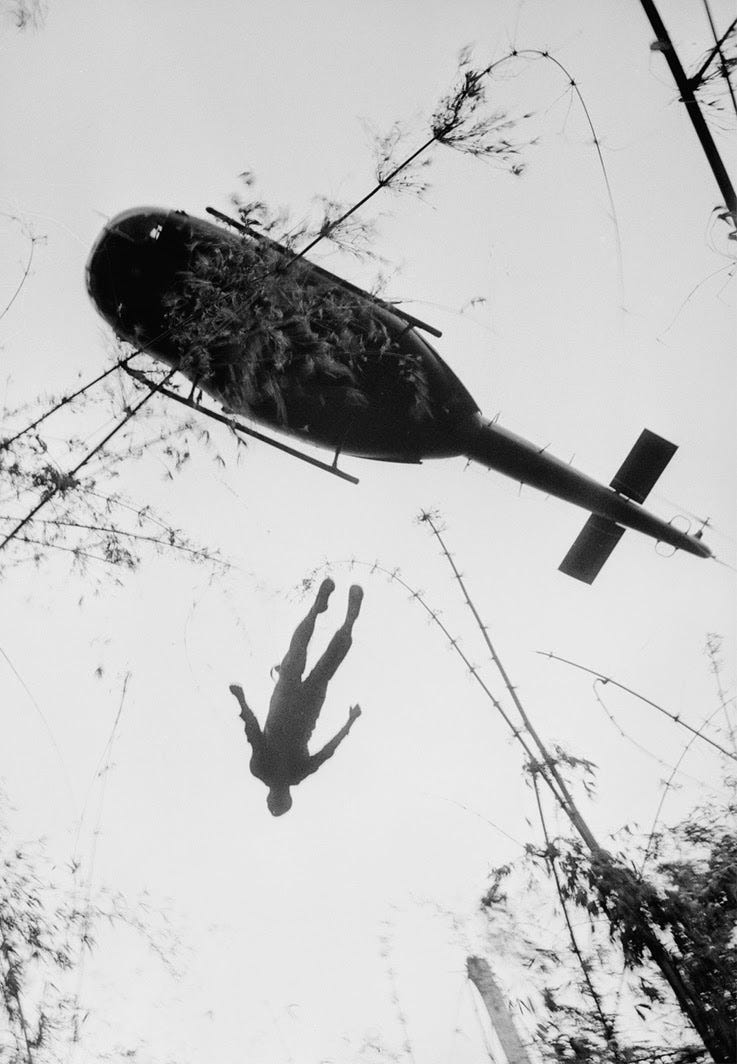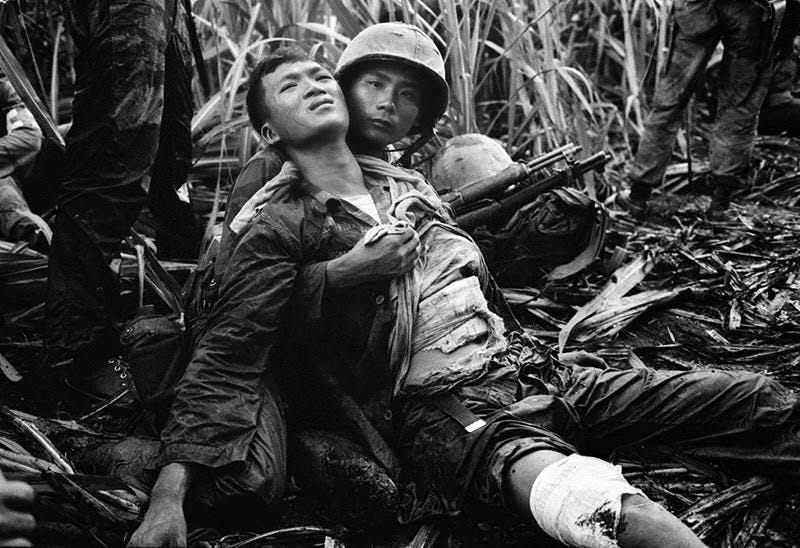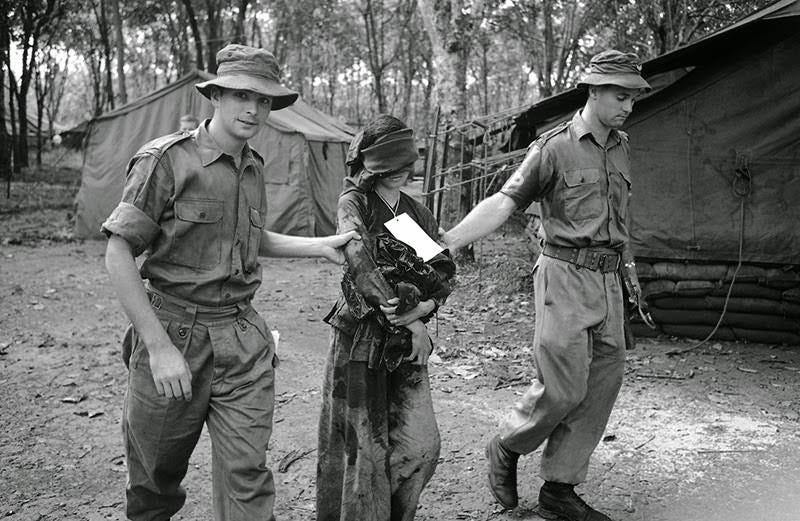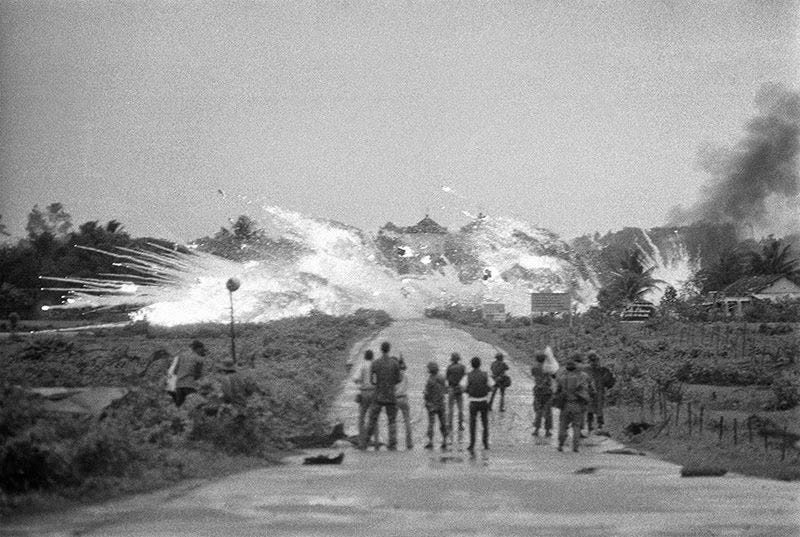The Nam! Our bloodiest war against socialism in photos Part 1
The military and politicians learned two lessons from Vietnam- do not let the press in to battle zones. Do not show caskets.
A nurse attempts to comfort a wounded U.S. Army soldier in a ward of the 8th army hospital at Nha Trang in South Vietnam on February 7, 1965. The soldier was one of more than 100 who were wounded during Viet Cong attacks on two U.S. military compounds at Pleiku, 240 miles north of Saigon. Seven Americans were killed in the attacks.
Flag-draped coffins of eight American Servicemen killed in attacks on U.S. military installations in South Vietnam, on February 7, are placed in transport plane at Saigon, February 9, 1965, for return flight to the United States. Funeral services were held at the Saigon Airport with U.S. Ambassador Maxwell D. Taylor and Vietnamese officials attending.
FBI agents carry Vietnam War draft resister Robert Whittington Eaton, 25, from a dwelling in Philadelphia on April 17, 1969, where Eaton had chained himself to 13 young men and women. The agent leading the way pushed one of the group who tried to block path to the sidewalk. At least six young persons were taken away with Easton.
Wounded and shocked civilian survivors of Dong Xoai crawl out of a fort bunker on June 6, 1965, where they survived murderous ground fighting and air bombardments of the previous two days.
Smoke rises from the southwestern part of Saigon on May 7, 1968, as residents stream across the bridge leaving into the capital to escape heavy fighting between the Viet Cong and South Vietnamese soldiers.
The body of an American paratrooper killed in action in the jungle near the Cambodian border is raised up to an evacuation helicopter in War Zone C, Vietnam, in 1966.
With the persuasion of a Viet Cong-made spear pressed against his throat, a captured Viet Cong guerrilla decided to talk to interrogators, telling them of a cache of Chinese grenades on March 28, 1965. He was captured with 13 other guerrillas and 17 suspects when two Vietnamese battalions overran a Viet Cong camp about 15 miles southwest of Da Nang air force base.
A South Vietnamese Marine, severely wounded in a Viet Cong ambush, is comforted by a comrade in a sugar-cane field at Duc Hoa, about 12 miles from Saigon, on August 5, 1963.
A Vietnamese girl, 23 years old, was captured by an Australian patrol 30 feet below ground at the end of a maze of tunnels some 10 miles west of the headquarters of the Australian task force (40 miles southeast of Saigon). The woman was crouched over a World War II radio set. About seven male Viet Cong took off when the Australians appeared—but the woman remained and appeared to be trying to conceal the radio set. She was taken back to the Australian headquarters where she told under sharp interrogation (which included a “waterprobe”; see her wet clothes after the interrogation) that she worked as a Viet Cong nurse in the village of Hoa Long and had been in the tunnel for 10 days. The Australians did not believe her because she seemed to lack any medical knowledge. They thought that she may have possibly been the leader of the political cell in Long Hoa. She was being led away after interrogation, clothes soaked from the “waterprobe” on October 29, 1966.
Police struggle with anti-Vietnam War demonstrators outside the Embassy of the United States in Grosvenor Square, London, on March 17, 1968. Look carefully at the picture. Two people in the center are screaming in horror as a woman is on the ground trying to protect her head, while a policeman is restraining an officer with all his might from attacking the girl on the ground.
Military police, reinforced by Army troops, throw back anti-war demonstrators as they tried to storm a mall entrance doorway at the Pentagon in Washington, D.C., on October 21, 1967.
Bombs with a mixture of napalm and white phosphorus jelly dropped by Vietnamese AF Skyraider bombers explode across Route 1, amid homes and in front of the Cao Dai Temple in the outskirts of Trang Bang, on June 8, 1972. In the foreground are Vietnamese soldiers and news and cameramen from various international news organizations who watch the scene.
Behind the paywall: Vietnam’s version of the war! Vietnam vs U.S War Movie | The Legend Makers | English Subtitles
Keep reading with a 7-day free trial
Subscribe to Hidden Cold War History to keep reading this post and get 7 days of free access to the full post archives.



